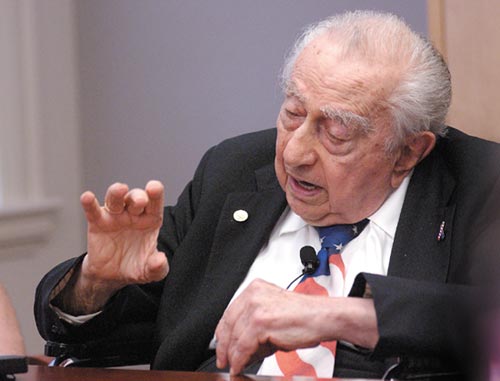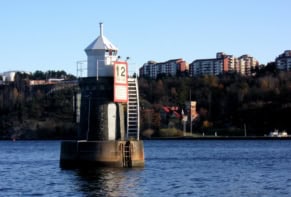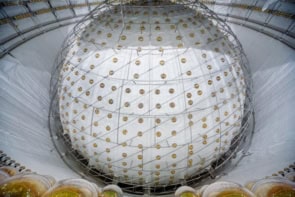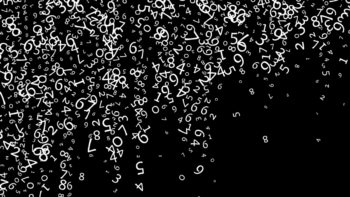Edward Teller, who has died at the age of 95, was a central figure in physics for most of the 20th century. Barton Bernstein recalls the life of a physicist who was either reviled or revered
The physicist widely known as the father of the H-bomb, Edward Teller, died on 9 September. Deeply involved for more than six decades in the most significant nuclear-weapons issues of his time, including the Oppenheimer security hearing and “star wars”, Teller was probably the most controversial American scientist of the post-war era.
To some, mostly liberals and radicals, he was Dr Strangelove. To others, usually conservatives and neo-conservatives, he was a vigilant patriot and a valiant defender of national security.
In 1973 the Nobel-prize winner Isidor Rabi, a friend in the 1920s, contended that the world would have been a better place without Edward Teller. In contrast, George W Bush extolled Teller for his service as “a strong advocate for nuclear defense and the cause of human freedom” when presenting him with the Presidential Medal of Freedom in July of this year.
From Budapest to the bomb
Born on 15 January 1908 into a secularized Jewish family in Budapest, Edward Teller was the brilliant, much-indulged son of a local attorney. In his first 12 years, however, he also witnessed the outbreak of the First World War, the destruction of the Austro-Hungarian empire, the brief triumph of a communist government in Hungary, and then the victory of a strongly anti-semitic, right-wing regime. His early political world was a perilous place, and later events would add to his sense of danger and dread.
Abandoning Hungary in the mid-1920s for a better education in Germany, Teller received his PhD at the University of Leipzig in 1930 under Werner Heisenberg, and also worked with Niels Bohr in Copenhagen. In 1933, however, anti-semitism forced him to leave Germany and after a year at London City College, he accepted a full professorship at George Washington University in the US and speedily became an American citizen. By this time, 1935, the 27-year-old Teller was already an internationally recognized theoretical physicist and would go on to leave a legacy that included the Gamow-Teller and Jahn-Teller effects.
Teller first became involved in the world of nuclear weapons in 1939, shortly after the discovery of fission, when he drove his friend Leo Szilard to Einstein’s summer home. At the time, Szilard was pushing Einstein to send what became his famous August 1939 letter to President Roosevelt, which ultimately led to the secret Manhattan project at Los Alamos to build the first atomic bombs.
Teller worked in the theoretical division at Los Alamos, which was headed by his long-time friend and fellow émigré Hans Bethe. However, Teller resented the fact that J Robert Oppenheimer, director of the project, had not appointed him to lead the theoretical effort and, greatly to Oppenheimer’s annoyance, spent much of his time working on a possible hydrogen bomb – a fusion device – rather than the fission-based atomic bomb that was top priority at Los Alamos. These wartime differences between Teller and Oppenheimer would spill over and fester in the post-war years, ultimately damaging both men.
When not annoying Oppenheimer, Teller also enjoyed playing the piano at Los Alamos and often did so late at night. It has been said that he could awaken almost a dozen present or future Nobel-prize winners with his musical prowess.
Life after Los Alamos
In early July 1945, five weeks before the Hiroshima bombing, Szilard urged Teller to sign a petition against the combat use of the atomic bomb on Japan. Teller refused, replying in a letter that “actual combat use might even be the best thing”. But for many years after Hiroshima, until his letter to Szilard was found by historians in the archives, Teller always insisted that he had actually opposed the use of the bomb and had instead wanted a non-combat demonstration over Japan. After his July 1945 letter was found in the 1970s, he sometimes – but not always – backed away from his earlier claims about his pre-Hiroshima beliefs.
After the Second World War, Teller moved to the University of Chicago and became an even more vigorous advocate of the H-bomb or “superbomb”. In late 1949, after the Soviet Union had broken the US nuclear monopoly, he stepped up his campaign among scientists and government officials for the thermonuclear weapon. Aided greatly by Nobel-prize winner Ernest Lawrence, and supported by powerful congressional allies and the Department of Defense, Teller triumphed in January 1950 when President Truman endorsed his position. In overcoming the opposition of Oppenheimer, Rabi and a number of other luminaries in American physics, Teller also began making significant enemies.
In 1951 Teller discovered how to make a H-bomb with the help of the Polish mathematician Stanislaw Ulam. However, many of his critics have long contended that Teller greatly understated Ulam’s contributions and the subject remains controversial. The hydrogen bomb itself was successfully detonated in a test at Eniwetok in the Marshall Islands on 1 November 1952.
In 1952 Teller overcame opposition from Oppenheimer and Rabi again to persuade the government to build a second nuclear-weapons lab at Livermore in California, and he soon had a dual role as professor at the University of California at Berkeley and associate director of the Livermore lab. He became director in 1958, but administration was not one of his strong points and he stepped down in 1960 to concentrate on conceiving bold ideas, pushing for new nuclear weapons and inspiring young scientists.
The fallout from the first H-bomb was not restricted to Eniwetok. In 1954 Teller notoriously gave evidence against Oppenheimer at a closed hearing that ultimately resulted in the latter losing his security clearance. Asked whether he considered Oppenheimer a security risk, Teller in 24 fateful words answered: “I feel that I would like to see the vital interests of this country in hands which I understand better, and therefore trust more.” Many pro-Oppenheimer scientists, including Rabi, never forgave Teller, and he was deeply hurt by this.
Star wars
In the 1980s Teller rose to prominence again when he successfully proposed to President Ronald Reagan that the US should build a space-based system to protect against nuclear missiles. Opponents of the Strategic Defense Initiative – also known as SDI or “star wars” – accused Teller of having overstated the progress that had been made on the technology needed for the system, and thus of having “hyped” the project. Charges of exaggerating the level of technological knowledge and the likelihood of weapons breakthroughs had long bedevilled Teller, who was normally very optimistic about technology and seldom wary of likely pitfalls.
Publicly a proponent of opening long-secret archives and greatly cutting back secrecy, because it seemed often unnecessary and frequently impaired research, Teller did not practise what he preached and routinely denied requests for access to papers about his own work. Perhaps his death will help roll back this blanket of secrecy, and allow a more rounded interpretation of Teller, replacing the frequently polarized views of him as a saviour or a Svengali.
However, Teller’s own Memoirs, written with the help of an assistant, are of limited help to historians (see Physics World June 2002 p19). The book does reveal hidden aspects of the man – his deep fear of the dark, and traumas as a young person – but the memoir, even more than most, is self-serving and not infrequently deceptive. That said, both friend and foe would acknowledge Teller’s rich capacity for puckishness, with playful verse and occasional self-mocking tales about brilliant émigré scientists. He
was especially fond of being called with his four Hungarian émigré friends – Szilard, Theodore von Karman, Eugene Wigner and John von Neumann – one of the “Martians”. They were a strange breed, Teller happily suggested, of near-unworldly intelligence and of remarkable originality.
In 1975, at the age of 68, Teller retired from Livermore and the University of California, although he remained an influential consultant at the weapons lab, and was appointed a senior research fellow at the right-wing Hoover Institution at Stanford University. He remained there until his death – a symbol to many of nuclear faith and staunch patriotism, and to others of an excessive desire for nuclear weapons and of ill-conceived anti-communism. On the day he died, Teller was due to open the Edward Teller Education Centre at Livermore, an initiative which has been set up to try and improve science education in California schools.
To many who knew Teller, he will be remembered as inspiring, fiercely honest and sometimes troubled, but loyal to true friends while frequently intellectually and personally demanding. To others, most often his critics, he will be recalled as often prickly, frequently Olympian and disdainful, less than candid on some important matters, and sometimes inclined even to wanton misrepresentations.
Well after Edward Teller’s death, the controversy will continue on the value and significance of his efforts in nuclear weapons-research and policy. Controversy will also continue in seeking to understand his deep passions – the peculiar combination of exuberance and fear – that shaped much of his personal and political life.




